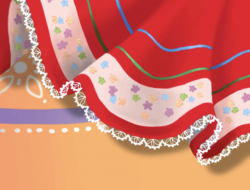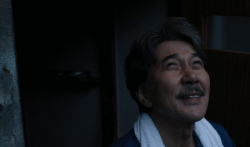

As a piece of theater that is equal parts civic engagement and entertainment, The Race is tailored to the interests of the typical aspiring politico at Georgetown. However, those expecting a step-by-step rehash of the defeat or victory of their favorite candidate should find another production. The Race is decidedly non-partisan, never asking candidate-specific questions, and instead choosing to ask, “What does leadership mean today?”
The way The Race decides to answer this question is an unprecedented form of theater. According to creator and director Michael Rohd (founding Artistic Director of the Sojourn Theater in Portland, Oregon and a visiting professor at Georgetown), the show is divided into three parts: “The first is performative-a non-linear collage of perceptions. The second is in Q&A format within the cast and the audience and using ichat to talk to those around the nation and the world. And the third part is a secret mystery part [best described as] part-town hall, part-karaoke.” The end result is what Rohd calls “structured spontaneity,” which means even the cast is unsure of what they’ll be in for every night, a task that requires well-honed improvisational skills.
The prospect of being in a scriptless play was terrifying at first to cast member Annabel Johnson-Teal (COL ‘09), as the play had to built from the bottom up. So much was up in the air that even a week before opening night, there was still uncertainty about the contents of the third act.
“There’s no logical progression to the play,” Johnson-Teal said, “You can switch the entire lineup of the play around and it would be fine. I was concerned that the audience wouldn’t understand and would get distracted looking one of the many things going on, balloons or dancing … but I was surprised at how willing the audience was willing to come along for the ride.”
One could watch The Race every night, and each time it would be different-only Rohd knows the questions that the cast will draw in the Q&A section. The authenticity and realism are enhanced by the fact that the 10-person cast, each of whom has the unique perspective of being a first time voter in a presidential election, isn’t really playing any characters.
“I focus on being present as a performer while retaining an element of myself when answering questions,” cast member Liz McAuliffe (COL ‘10) said.
The biggest thing that will change about The Race now that the real-life election is over will be the audience’s attitude.
“The third act where the audience participates is the most partisan,” Johnson-Teal described. “While we don’t ask partisan questions, we ask hard questions. Like what do you want your leader to look like? What should their relationship to their family be like? And it will be interesting to see what people are willing to share and what they absolutely refuse to say.”
In the aftermath of Obama’s win, there is no doubt that the answers to those questions, those definitions of leadership, are radically altered for the audience as well as the cast. Ultimately, that is Rohd’s goal in creating The Race. A self-described “citizen artist,” his goal for the show is to “expand public conversation,” Rohd explained.
So for those Hoyas who feel the post-election excitement starting to subside, consider The Race as another opportunity for civic participation beyond the voting booth.
“Even for those people exhausted by a two-year campaign process, [The Race] seeks to reenergize the political process and ask questions that haven’t been asked,” Johnson-Teal stated. “People have observed the monster that the election became. [The Race] is an opportunity to calm down and figure out what it all means to me. Forget the lies, forget the [semantics], but just rediscover the personal part of politics.”




